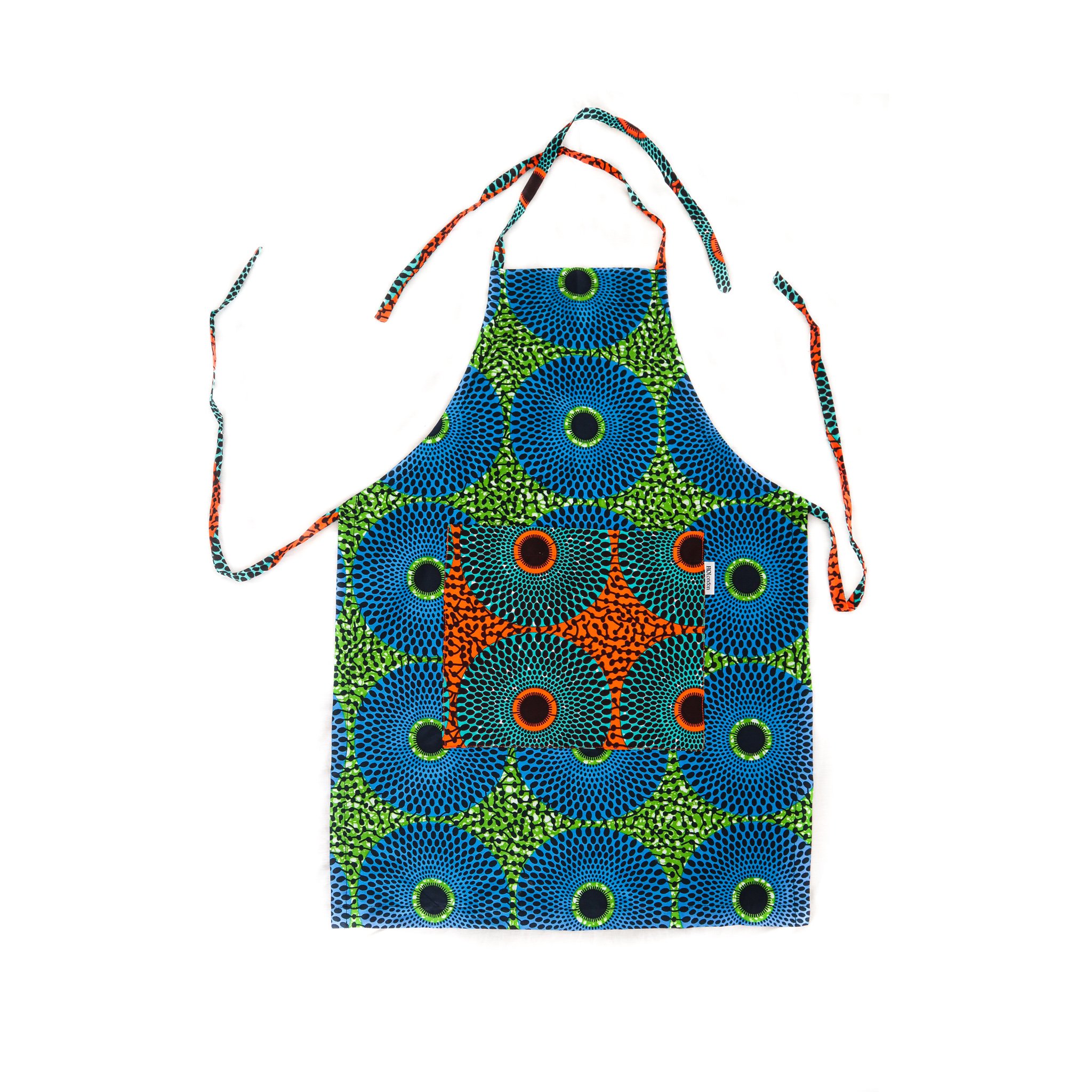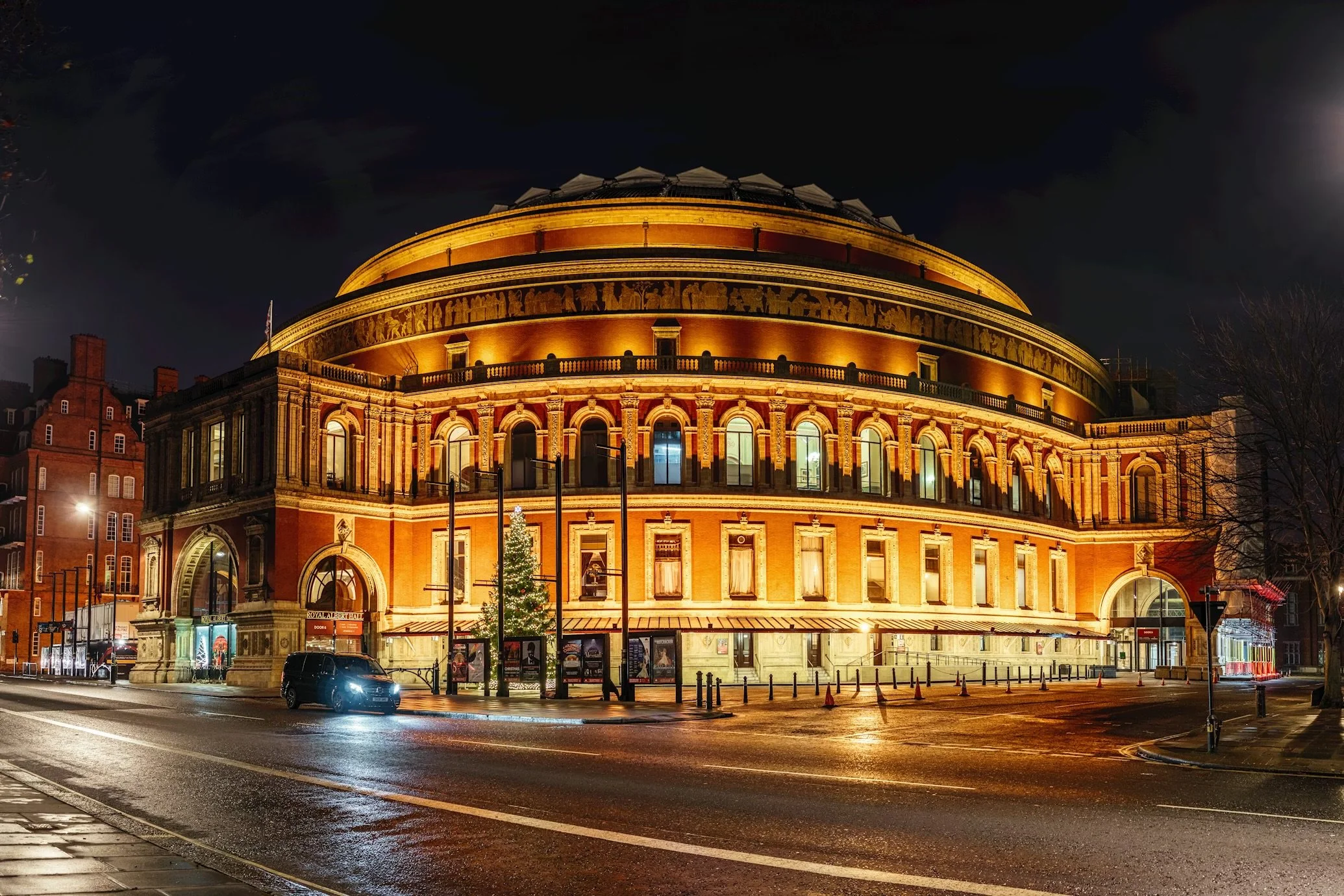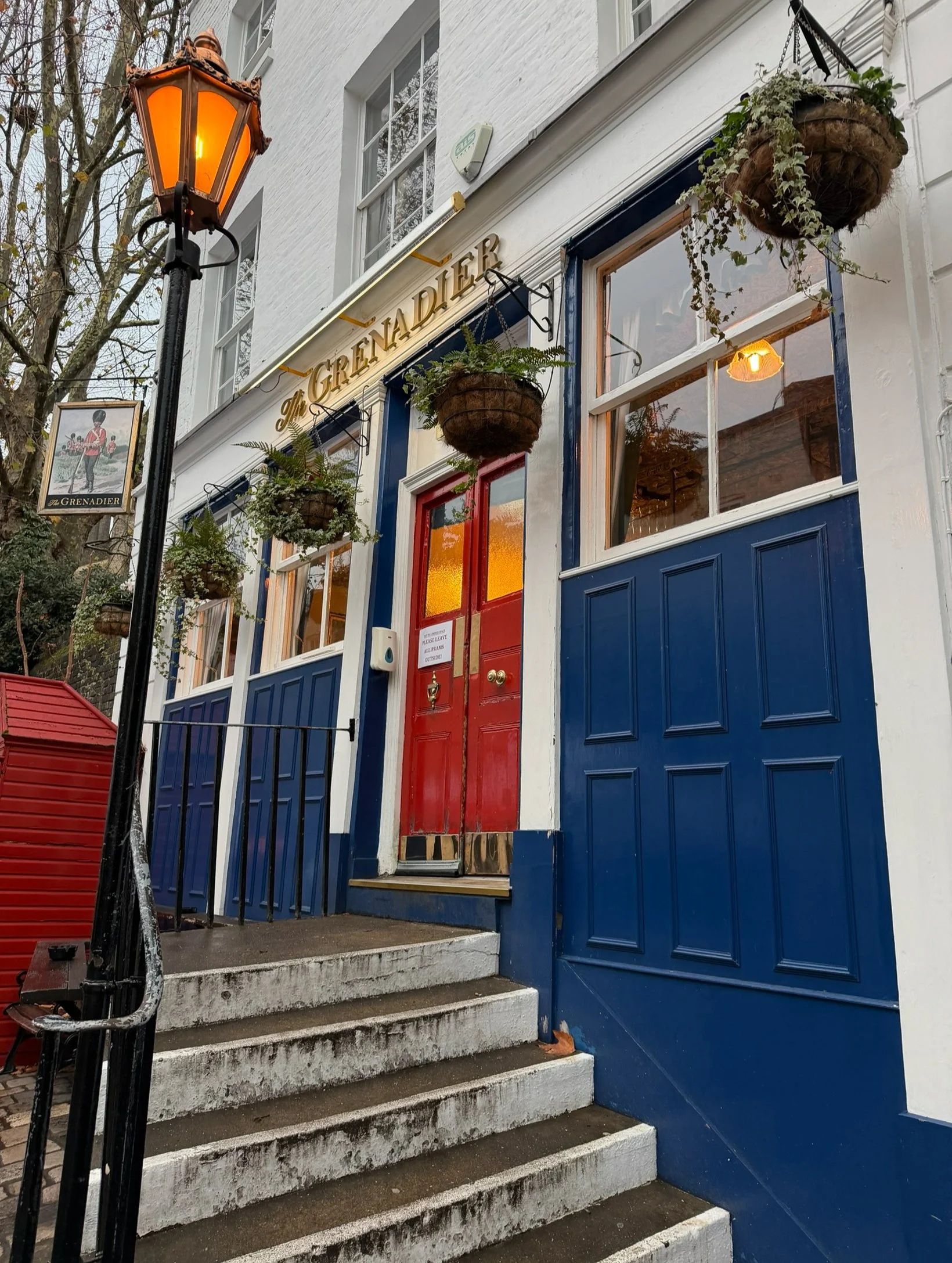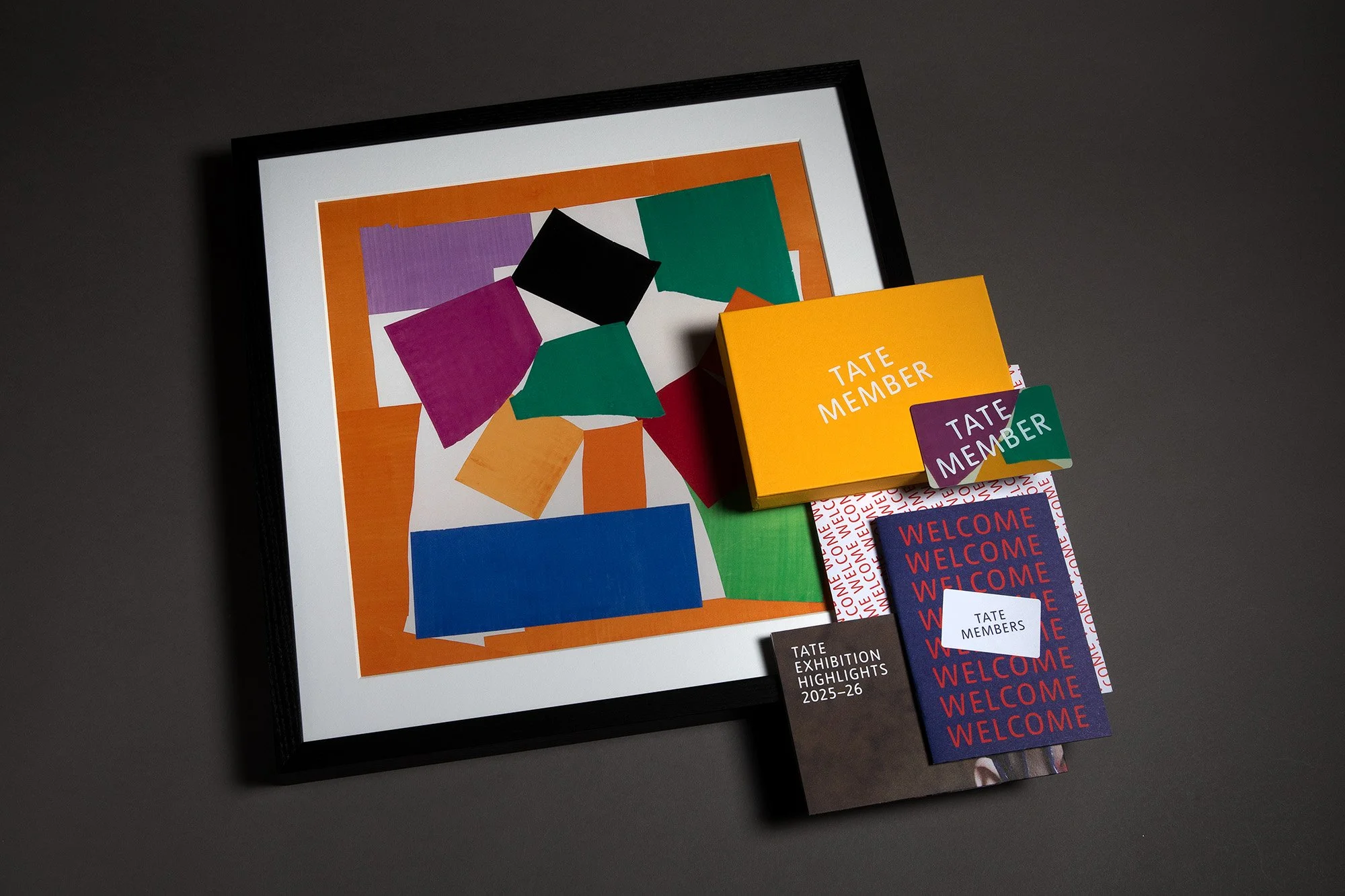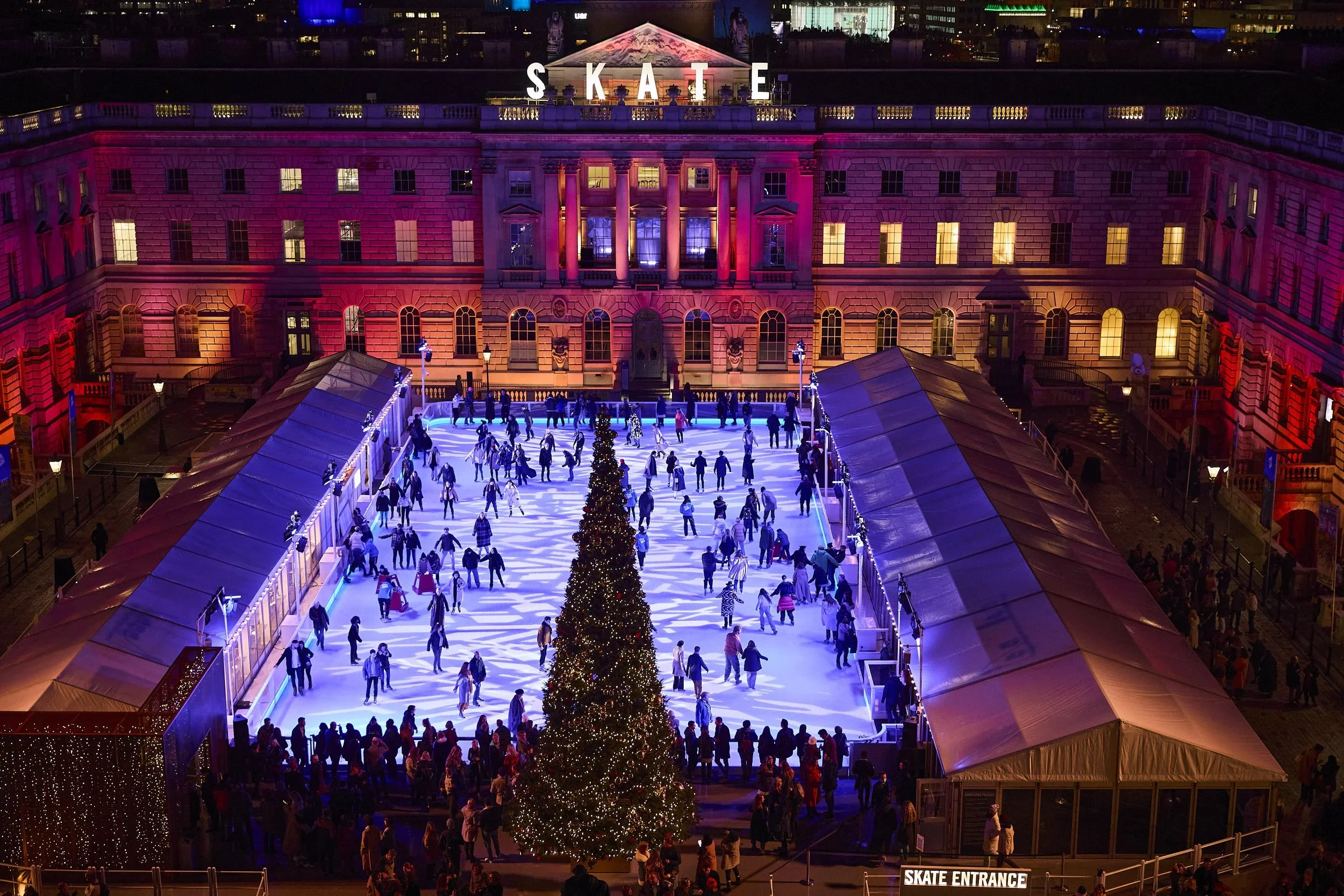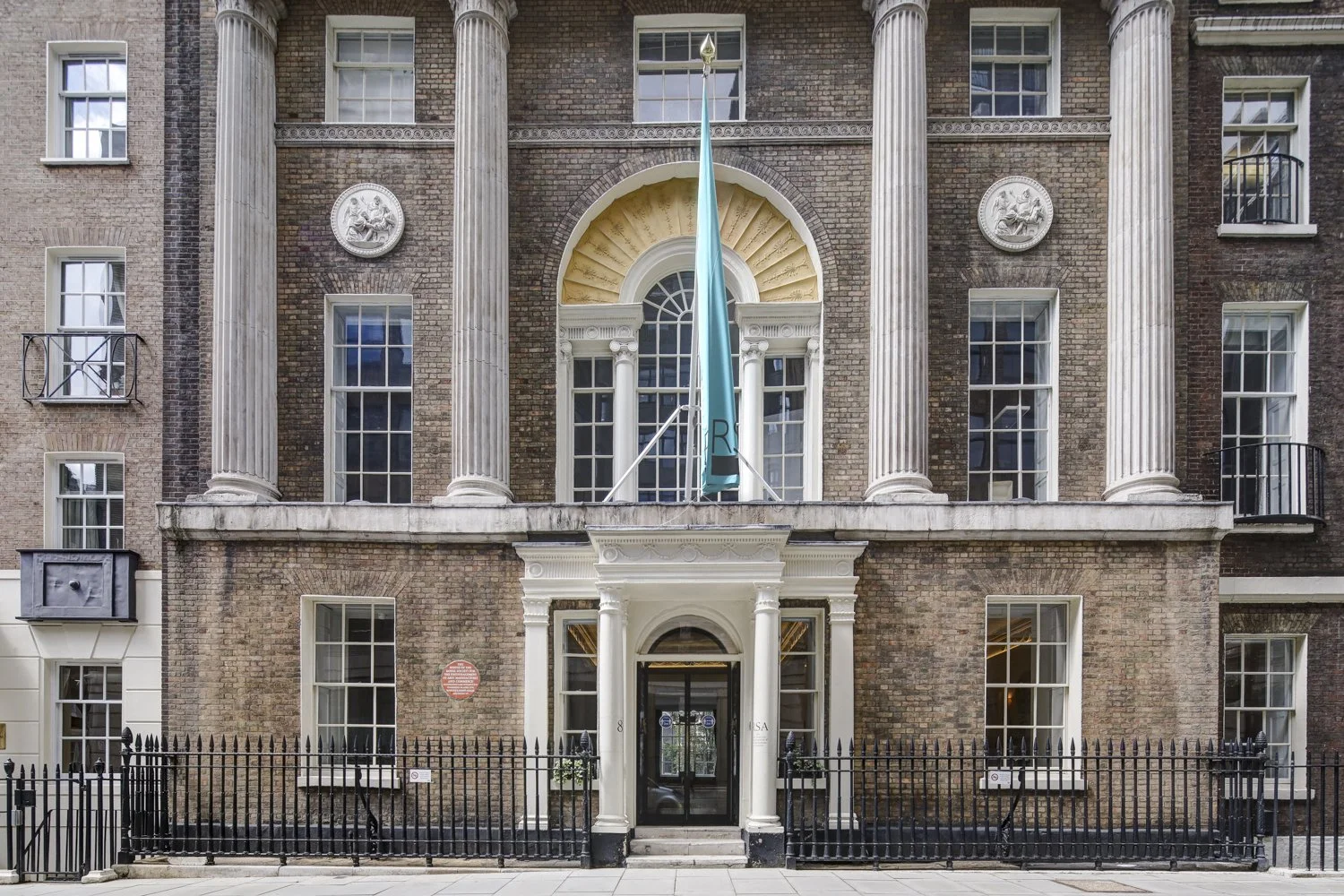Japan House’s new exhibition celebrates the power and precision of Japanese visual communication
This week brought us to Japan House on High Street Kensington for the opening of Pictograms: Iconic Japanese Designs, a slick, informative, and fun new exhibition for all ages, celebrating the power and precision of Japanese visual communication.
Located in The Gallery on the lower ground floor of Japan House, the exhibition fills the large room with the evolution of pictograms. From ancient cave paintings, some dating back at least 40,000 years, to the digital age of emojis, the exhibition explores how Japan has played a quietly influential role in shaping this universal language, most notably through the pioneering icons of the 1964 Tokyo Olympic Games and the globally adopted concept of emoji.

Installation view Pictograms: Iconic Japanese Designs Japan House. Image courtesy of Japan House.
The universally recognised word ‘emoji’, comprised of e (‘picture’) and moji (‘character’), originated in Japan, marking a new chapter in visual language. We see pictograms every day, but where did they come from, and how do they speak so clearly without words? The answer is clearly demonstrated here.
Be sure to catch The Making of the Tokyo 1964 Olympic Pictograms video, in which Nagai Kazumasa, graphic designer and advisor at the Nippon Design Centre, reflects on how the design process for the 1964 Tokyo Olympic Games began in 1959. He shares insights into the challenges of creating the facility pictograms.
With visitors arriving from around the world for the Olympics, the organisers faced the challenge of communicating with speakers of multiple languages. This necessity gave rise to the first systematically designed set of Olympic pictograms, covering both sports and event facilities. Since 1964, pictograms for each sport have become a standard feature of every Games’ visual identity, with each host city designing its own custom pictograms. As technology has progressed, design continues to adapt and evolve. When Tokyo hosted the 2020 Olympic Games, Japan introduced animated pictograms for each sporting event, these are also on display.

Installation view Pictograms: Iconic Japanese Designs Japan House. Image courtesy of Japan House.
One can’t help but marvel at how thoughtful design can distil complex ideas into clear, impactful representations that ensure clarity and universal recognition. You’ll come to realise how much we already rely on pictograms in our daily lives. They are found everywhere, from road signs and safety labels to washing instructions, packaging, and maps. Pictograms allow everyone to respond instinctively, transcending cultural and language barriers.
Highlights include the innovative Experience Japan Pictograms project, featuring over 600 designs created to support international travellers. Interactive displays, such as a lightbox table, invite visitors of all ages to explore and devise their own symbols and pictograms by combining modular components.
Another standout area features usually miniature pictograms brought to full scale. Visitors are invited to step into and become part of a pictogram themselves, standing under a 2.5 metre torii shrine gate, sizing up to a sumo wrestler, or even taking the controls of a Japanese train. It’s a perfect spot for creating some memorable photos.
An additional zone reimagines what pictograms can be, moving beyond flat graphics to explore their creative potential in three-dimensional and interactive forms.

Installation view Pictograms: Iconic Japanese Designs Japan House. Image courtesy of Japan House.
The use of a grid system in designing pictograms is well illustrated by a display of work from UK school children aged 7 to 16, who were invited by the Nippon Design Centre to create original pictograms representing an aspect of London that is important to them. Each offers a personal take on what ‘their London’ looks like as a symbol. Their drawings begin on grid paper and develop into some excellent pictograms. A few favourites include the fish and chips, Tower Bridge, and afternoon tea pictograms.
This is a travelling exhibition which will later move on to Los Angeles and São Paulo. For now, we’re lucky to have it here over the school holidays and into the autumn, offering something entertaining and inspiring for the whole family.
Additionally, to mark the 80th anniversary of the atomic bombings of Hiroshima and Nagasaki, Japan House is hosting workshops inviting participants to fold origami paper cranes, inspired by the story of Sasaki Sadako. Sadako was two years old when she was exposed to radiation from the Hiroshima bombing. Later developing leukaemia, she began folding 1,000 cranes while wishing for recovery.

Installation view Pictograms: Iconic Japanese Designs Japan House. Image courtesy of Japan House.
A series of workshops is being held in the Library throughout August, where participants can learn to fold paper cranes to be displayed on the Lower Ground Floor. Visitors can pick up origami paper and instructions to contribute their cranes at the reception desk.
A visit to Japan House is a worthwhile and enjoyable experience.
Date: 30 July – 9 November 2025. Location: Japan House London, 101-111 Kensington High St, London W8 5SA. Price: Free. japanhouselondon.uk
Click here to disocver family workshops at Japan House London.
Review by Natascha Milsom
The Southbank Centre has announced Classical Mixtape: A Live Takeover, a one-night-only, multi-venue event taking place in February 2026, bringing together more than 200 musicians from six orchestras across its riverside site…
This week in London features late-night Christmas shopping on Columbia Road, festive wreath-making workshops, live Brazilian jazz, mince pie cruises, theatre performances, art exhibitions, a Christmas disco, and volunteering opportunities with The Salvation Army.
Discover London’s unmissable 2026 fashion exhibitions, from over 200 pieces of the late Queen’s wardrobe at The King’s Gallery to the V&A’s showcase of Elsa Schiaparelli’s avant-garde designs and artistic collaborations…
Marking her largest UK project to date, Sedira’s work will respond to the unique architectural and historical context of the iconic Duveen Galleries, offering audiences an experience that merges the political, poetic, and personal…
This week in London, enjoy festive events including Carols at the Royal Albert Hall, LSO concerts, designer charity pop-ups, late-night shopping, art exhibitions, film screenings, foodie experiences, last-chance shows, and volunteer opportunities across the city…
Explore Belgravia this Christmas with a festive pub crawl through London’s most charming historic pubs, from The Grenadier’s cosy mews hideaway to The Nags Head’s quirky classic tavern…
From the joys of Christmas at Kew to the lively Smithfield meat auction, and from major concerts and ballets to intimate workshops and family-friendly trails, the city offers an extraordinary mix of experiences. This guide brings together the very best of Christmas in London…
This guide highlights some of the must-see art exhibitions to visit over the festive period in London, including the days between Christmas and New Year’s. From major retrospectives of international masters such as Kerry James Marshall, Wayne Thiebaud, and Anna Ancher, to engaging contemporary works by Danielle Brathwaite-Shirley, Jennie Baptiste, and Tanoa Sasraku…
London’s cultural scene, a gallery or museum membership is the perfect alternative to another pair of socks. From unlimited access to exhibitions and exclusive events to discounts in shops and cafés, these memberships offer experiences that can be enjoyed throughout the year, while also supporting the vital work of arts organisations…
Your guide to London’s can’t-miss events this week, 17–23 November 2025, from Cabaret Voltaire live at ICA to Ballet Shoes at the National Theatre and The Evolution of UK Jazz at the Barbican…
Charlotte Winifred Guérard is a London-based artist and recent graduate of the Royal Academy of Arts School, where she was recognised as a Paul Smith’s Foundation scholar for her artistic achievement. Her work has been exhibited at the Royal Academy, Coleman Project Space, Fitzrovia Gallery, Messums and Palmer Gallery, and she has completed prestigious residencies including…
This week in London, you can enjoy festive ice skating, Christmas lights, jazz and classical concerts, and a range of art exhibitions. Highlights include Skate at Somerset House, Christmas at Kew, the EFG Jazz Festival, and the Taylor Wessing Photo Portrait Prize 2025…
From the 6th to the 9th of November, the leading West African art fair Art X Lagos celebrates its 10th birthday at the Federal Palace on Victoria Island. Founded by Tokini Peterside-Schwebig in 2016, the fair has become an unmissable event in the global art calendar, attracting galleries from over 70 countries and participants from 170 countries since its launch…
If you’re after something bold, queer and completely uncategorisable this November, you need to know about KUNSTY, the Southbank Centre’s brand new four day performance series running from 5-8 November 2025…
London’s most beloved Christmas activity is back. As festive cheer returns to the city, with twinkling lights and the scent of mulled wine drifting through the air, for many Londoners and visitors from further afield, nothing quite captures the spirit of the city at Christmas like strapping on a pair of skates and stepping onto the ice…
As the crisp autumn air settles over London, the iconic gardens of Berkeley Square are once again hosting one of the most anticipated gatherings in the art and antiques world: the LAPADA Fair 2025, running from 28 October to 2 November…
November is a lively time to be in London, with the festive season in full swing and the city buzzing with events. From skating at Somerset House to Christmas lights switch-ons and festive markets like the Southbank Centre Winter Market, there are plenty of ways to embrace the holiday spirit. Beyond the seasonal festivities, London’s cultural calendar is brimming with art, music, and performance…
As far as weekend getaways go, this 70-acre estate offers a peaceful country escape with all the best elements of a traditional hotel experience. Staffordshire, arguably, is not yet on the map for luxury and leisure but set in the heart of the beautiful Staffordshire Moorlands, The Tawny surely is a beacon of things to come…
Art Basel Paris returns to the Grand Palais for its second edition from 24–26 October 2025, bringing together 206 leading galleries from 41 countries and territories. Below is our guide to seven artists not to miss at this year’s edition, each presenting distinctive work through their galleries…
Art Basel Paris 2025’s Public Programme turns the city into a stage for contemporary art, placing bold, large-scale works in streets, courtyards, and cultural landmarks - all free to visit. From a dreamy opera of 30 surreal figures at Palais d’Iéna to a colossal Kermit the Frog balloon looming over Place Vendôme, here is our guide to five standout works from the Art Basel Public Programme that you simply cannot miss…
Frieze London 2025 returns to Regent’s Park with a dynamic mix of emerging and established galleries, reaffirming the city’s creative pulse. Highlights include Esther Schipper’s dreamlike works by Sarah Buckner, Gagosian’s vibrant installation by Lauren Halsey, and Pace’s meditative paintings by William Monk. From Do Ho Suh’s ethereal fabric architectures at Lehmann Maupin…
Paris launches into its own spectacular celebration of art each October, transforming the city into a hub for collectors, curators, and cultural enthusiasts. From the grandeur of Art Basel Paris at the newly renovated Grand Palais to the focused energy of Paris Internationale, OFFSCREEN, AKAA and Menart, each fair contributes something unique to the city’s vibrant art scene.
British Ceramics Biennial is back and better than ever. Running until 19 October 2025, the dynamic programme of free exhibitions, screenings, talks and events is proving a hit with both locals and critics…and just an hour and a half’s train away from London, it’s well worth a day trip…
Echoes of Migration is the flagship summit to launch new not-for-profit platform Art Voyage this autumn. Echoes of Migration officially inaugurates Art Voyage’s innovative, itinerant cultural programme…and gears us up for what is in store for the Art Voyage Biennial….
Betty Ogundipe (b. 2001) is a multidisciplinary artist of Nigerian heritage whose work explores resilience, femininity, and the power of love and resistance. Her debut solo exhibition, LOVE/FIGHT at Tache Gallery…
The V&A’s Marie Antoinette Style, sponsored by Manolo Blahnik, is being hailed as the first landmark exhibition in the UK devoted to France’s most infamous Queen of Fashion. It is a glittering journey through silk, flamboyance and legacy….
Malta is fast becoming one of the Mediterranean’s hottest destinations, offering sun-soaked beaches into October, a thriving arts and culture scene, and stunning architecture and landscapes…
This October in London offers everything from Frieze and the BFI Film Festival to Peggy Gou, the London Literature Festival, and Halloween at Kew.
Discover the best restaurants in Malta, where to eat, drink and enjoy authentic Maltese food and Michelin-star dining…
From The Phoenicia Hotel and Iniala Harbour House, Valletta showcases some of Malta’s finest hotels, ranging from landmark luxury where royalty once danced to boutique hideaways filled with Maltese art…
